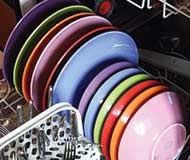
New dishwashers are very efficient at doing their job. Let them do the rinsing and washing. Save your time and water. But don't forget to check the filter regularly for larger debris (and the occasional spoon).
 New dishwashers are very efficient at doing their job. Let them do the rinsing and washing. Save your time and water. But don't forget to check the filter regularly for larger debris (and the occasional spoon).  Reduce the amount of water you use by wearing clothes more than once. Some clothes are only worn for a few hours. Try hanging them up and wearing them another time. A side benefit is that the fabric of favorite clothes will last longer with less washing. 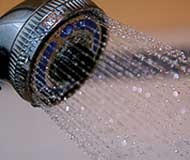 According to Aqua America, even a water saving shower head uses 1.5 to 4 gallons per minute. To save water, take shorter showers and not baths, which can use 40-50 gallons per bath. 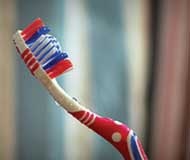 Turn off the water when brushing teeth and shaving. According to Aqua America, 10-20 gallons of water can be used if the water runs while you perform these activities. Running water only when you need a quick rinse will dramatically reduce your water usage. New Energy Star dishwashers and clothes washers use 30% less water than conventional appliances. Not only does this reduce your water bill, but you also save the energy needed to heat it.
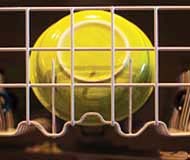 According to Aqua America, a conventional clothes washer uses 60 gallons of water per wash while a normal run of a dishwasher uses 15 gallons. Running full loads rather than more frequent partial loads will save you water. 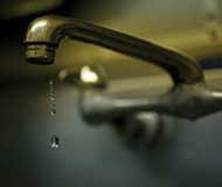 Make sure all your faucets and appliances that use water are turned off. Look at your water meter and take a reading. If after a half hour the reading has changed then you have a leak. Leaking faucets are the most obvious. A steady dripping faucet can waste up to 4400 gallons of water per year. If you know plumbing then you know the fix. If not, get a person qualified to make the repair. Toilets are big water wasters if they are leaking. Usually you can detect a slight noise of running water constantly or intermittently. Again, get a qualified individual to make the repair if you do not know how to tackle the job yourself.  Standard shower heads are rated at 2.5 gallons per minute (at 80 psi, a little higher than most houses’ water pressure). 1.5 gallon per minute models can provide a very nice shower (though quality varies, so check Consumer Reports or another reference). Over a ten-minute shower, that’s ten gallons saved. Given Aqua’s marginal charge for water and the cost of the gas to heat those ten gallons, that’s only about 12¢ in savings. But over 500 showers, that adds up to $60. 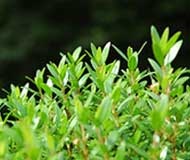 Habitat loss and invasive plants are two major factors contributing to the loss of biodiversity. We can help reverse this trend by planting native trees, shrubs, flowers, and grasses in our yards. Plants native to our area are vital parts of the local ecosystem, providing shelter and nesting sites as well as being a source of food and flowers to support pollinators and other insects that are in turn a food source for other animals such as birds. Just planting one native oak tree will support over 500 different species of insects! Pull out invasive and aggressive plants such as English ivy and pachysandra and replace them with native groundcovers with greater value to pollinators. Native plants make a wonderful addition to your landscaping because they are adapted to the local climate and require less maintenance once established. To explore the options of native plants to add to your yard, go to www.choosenativeplants.com, or visit Redbud Native Plant Nursery right here in Media. On Mother’s Day weekend, Brandywine Conservancy in Chadds Ford holds its annual wildflower, native plant and seed sale, and they have volunteers on hand to answer questions about which plants work best in your yard. You can purchase native plants throughout the season at Bowman’s Hill Wildflower Preserve in New Hope and Mount Cuba Center in Delaware. 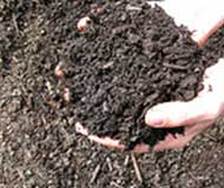 Bare ground around your plants exposes their roots to excessive dryness, cold and hot temperatures, and compacted, low-nutrient soil. Applying mulch around your plants and trees helps maintain the health of the plants and soil and cuts back on the need for extra watering and fertilizers. Mulches can be made up of a variety of organic and inorganic material, including leaves, compost mixes, bark, and woodchips. Save a pile of leaves from the fall to use as mulch over the winter and into the next summer. A 2-4 inch layer of mulch helps retain moisture, suppresses growth of weeds, protects roots from extreme temperatures (both winter and summer), adds nutrients as the mulch decomposes, and improves soil structure and drainage. Mulch also houses beneficial micro- and macro-organisms, improving the health of the local ecosystem. Be careful not to apply mulch too deeply and not to touch the trunks of trees: pull mulch several inches back from the base. Leaf mulch is ideal for the purpose. It’s easy to handle and has a finer texture than wood mulch. Also, wood mulch can contain artillery spore, which can deface walls and structures nearby. And leaf mulch is generally a local product: many municipalities offer residents their own recycled fall collections at an attractive price. In our own area, both Nether Providence and Swarthmore do this. |
|
|
info@aFewSteps.org
Mailing Address: aFewSteps.org P.O.Box 330 Wallingford PA 19086-0330 |
